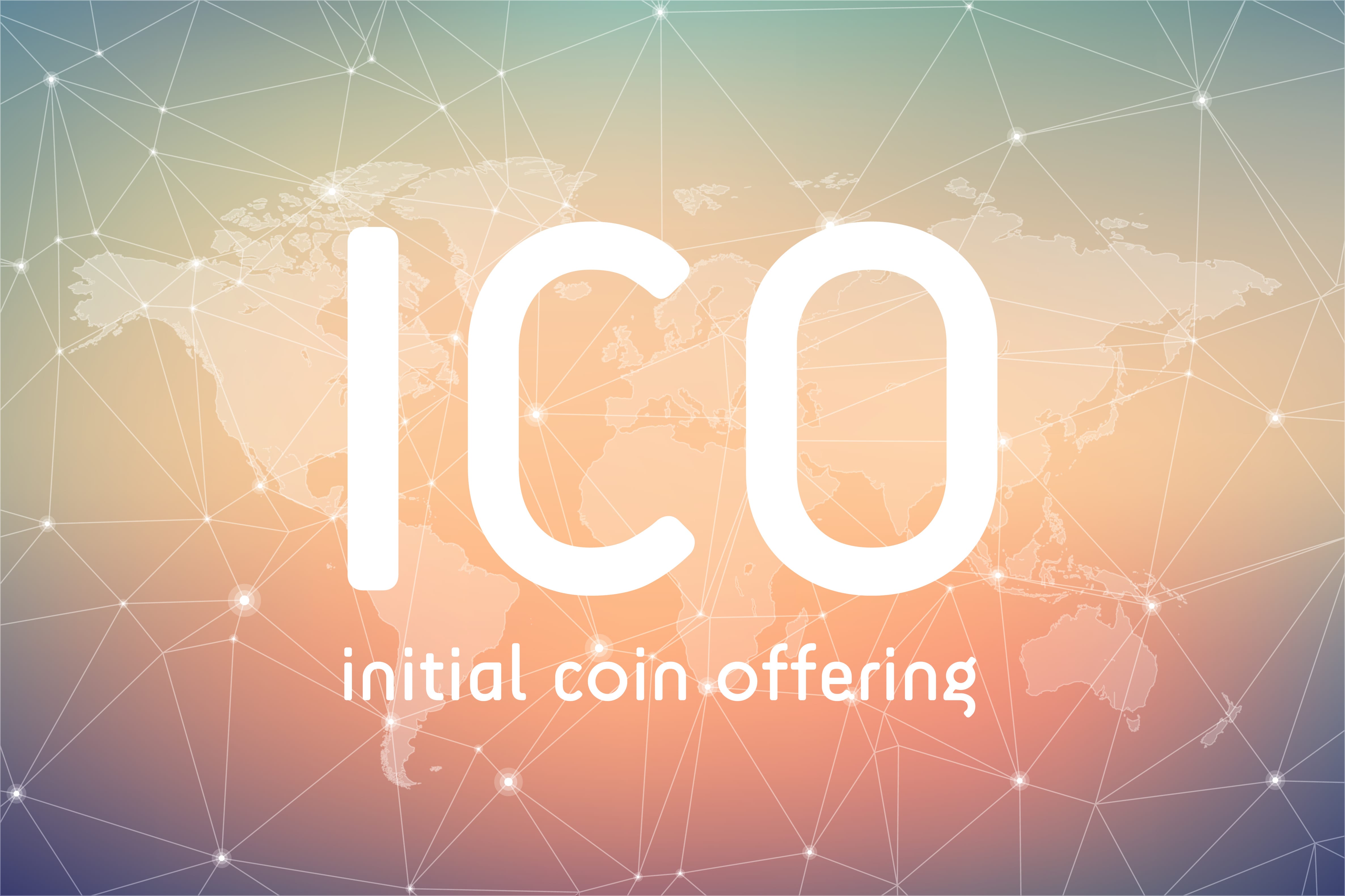Initial Coin Offering (ICO)

What is an Initial Coin Offering (ICO)?
An Initial Coin Offering (ICO) is an innovative form of financing which is typical for cryptocurrencies and blockchain ventures. In many respects, an ICO can be seen as an Initial Public Offering (IPO) which is typically used for capital-raising activity in traditional capital markets. However, there are few subtle but very relevant differences between an ICO and an IPO. The main difference between the two is that an ICO removes the role of intermediaries from the capital-raising process, meaning it creates a direct connection between the company and the investors. The smart contract on which ICOs are typically built upon guarantees that the interests between the parties are aligned. That is, while financial intermediaries play a key role in modern IPOs, the role of the intermediary is replaced by a smart contract, i.e., an automatically executable program, within the context of an ICO.
Because of its simplicity and transparency, ICOs are the preferred method for fundraising for startups wishing to offer products and services, usually related to the cryptocurrency and the blockchain space. Interested investors can simply buy into the offering and receive a new cryptocurrency or digital tokens issued by the company. This token or asset may have some utility in using the product or service which is offered by the company, or simply represents a stake in the company which can be eventually resold on the marketplace for a profit.
The key element that distinguishes ICOs from other forms of financing is the use of the blockchain technology and smart contracts functionalities to regulate the securities issuances, anonymity, as well as operational security. The rising of the cryptocurrency markets and the increasing public awareness have been boosting the popularity of ICOs to unprecedented levels.
Types of Initial Coin Offerings
To a first approximation, there are two main types of Initial Coin Offerings, private and public ICOs.
A private ICO refers only to a very limited number of initial investors who are allowed to participate in the funding process. Generally, those investors are accredited financial institutions, private equity funds, venture capitalists, and high net-worth individuals. In this respect, a private ICO corresponds to a round of financing at the very early stages of the life of a startup, which typically implies higher risks for investors but also potentially much higher returns.
On the other hand, a public ICO is essentially a form of crowdfunding that targets the more general public. In its purest form represents a form of “democratization” of capital investing whereby everyone can participate in financing companies at early stages and eventually profit from their growth. Due to increasing regulatory scrutiny and oversight, private ICOs tend to be preferred to public ICOs.
How does an ICO work?
An initial coin offering is usually a sophisticated process that requires expertise on technology, finance and law. This is because an ICO goes around three key ingredients: smart contracts and blockchain technology, capital, and investors’ protection laws.
For starters, a company that needs to raise capital through an ICO needs to identify the targets for its fundraising campaign and creates all the relevant material which is helpful for potential investors to understand the company strategy and business plan. This is typically done through a white paper which outlines the project, the monetization opportunities, the underlying IT protocol and blockchain, the business model. It also describes the tokens sale, its distribution and function, its holder’s rights, and its value.
The second step into the ICO is the creation of tokens which should be distributed to investors. Tokens essentially represent stakes on the company and are fungible, meaning they can be traded in the secondary market. Every ICO has a different pricing mechanism and the number of tokens issued is usually limited, with a set funding limit. The most common way to offer tokens is via auction deployed and run on the blockchain and regulated via smart contracts: most token sales today happen on the Ethereum network, although an increasing number of sales are happening on competing blockchain platforms such as Binance Coin (BNB), Cardano (ADA), etc. Participation in the ICO and token purchases typically are implemented via digital wallets such as MetaMask, Parity or MyEhterWallet. Investors can buy ICO tokens with cryptocurrency, other existing tokens or fiat currency and receive in return the corresponding amount of new tokens.
Not all financing campaigns end successfully. The minimum fund required is often called soft cap. If the soft cap is not reached then the money may be returned to investors; at this point the ICO would be deemed as unsuccessful. If the funding requirements are instead met within a specific timeframe, the project can start and the ICO is deemed successful. Typically together with the minimum capital requirements, the soft cap, in the ICO proposal is also outlined the target capital amount which is called hard cap.
The main elements of an ICO
- The Token – There is a great variety of tokens that can serve an array of different purposes, from granting the holder access to a particular product/service, to entitling them company dividends and rights. Depending on their function, ICO tokens can be classified in two main categories:
- Utility – These tokens are integrated into an existing protocol on a blockchain and give access to particular services offered by the company.
- Security/Investment – Tokens which give the owner the right to participate in the issuer’s future returns and in some cases give voting or other participation rights. They represent legal ownership of a physical or digital asset and are bought by investors with the purpose of profit. Their value is directly tied to the asset’s valuation (the more valuable the asset, the more the token) and they may be freely transferable or otherwise traded amongst investors.
Both types of tokens can be tradable on the secondary market, that is either swapped in decentralised exchanges or traded on centralised platforms.
- The white paper – It is standard practice for ICOs that the issuer publishes a “white paper” on its website. This outlines key features of a given project such as the mission, objectives, the roadmap and final target, the technical description and development strategy, as well as the detailed guidelines for the ICO (pricing and distribution methodology, technical procedures, timing of release, etc).
- Promotion campaign – In ICOs the marketing and PR campaign is the primary, and often the only, communication and distribution channel. This is contrary to initial public offerings (IPO) where online marketing and the publication of the prospectus are only complementary to the stock exchange as traditional sales channels.
- Public sale and listing – After the end of the initial sale, the tokens are listed on the exchange price lists. The listing ensures that the tokens can be traded on the secondary market. Smaller ICOs are typically traded on small, less liquid, exchanges.
ICO regulations
ICOs are a completely new phenomenon in the world of finance – the earliest token sales of ICOs occurred as recently as July 2013 – having a significant impact on capital-raising processes. This brings a number of regulatory challenges. Approaches to the regulation are not consistent across different jurisdictions. The lack of a specific regulatory framework for these operations has favored their proliferation worldwide, for a total value of approximately 5.68 billions of USD in 2017 (Coindesk).
The regulatory approach can be classified in three main groups:
- Complete banning: some jurisdictions (China, South Korea and Colombia) are forbidding token sales tout court;
- Developing regulation: several countries (Switzerland, Gibraltar, Australia, New Zealand, Hong Kong, and the United Arab Emirates) have been developing specific ICOs regulations (such as some European countries as well as the United States and Canada) to govern the conduct of ICOs in order to curb potential risks and promote possible gains.;
- Absence of regulation: In other countries (such as India, Thailand, Hong Kong and Philippines) regulation is almost completely absent. ICOs are allowed but not regulated by authorities and investors must therefore trust the claims of the companies in purchasing their tokens.
ICO vs. IPO
To a first approximation ICOs are compared to traditional initial public offerings (IPOs). However, there are a series of key differences between the two. For starters, IPOs deal purely with professional investors while ICOs can really be shaped as crowdfunding events in which literally any retail investor can participate. Unlike crowdfunding though, there is an expectation of high returns following the investment.
The second main difference between ICOs and IPOs is regulation. While government authorities such as the Securities and Exchange Commission (SEC) have a stringent regulatory oversight on IPOs, the ICOs are mostly unregulated processes, or at least regulatory requirements are much more lax than traditional IPOs.
Third, the structure of ICOs is essentially free, that is there is no standard structurting as in initial public offerings. Such flexibility and transparency is made possible by the use of smart contracts and blockchain capabilities to manage the capital raising process and guarantees that the incentives of all stakeholders are aligned.






